I’d made it to Canterbury, walked a Roman wall and visited the famous cathedral, but I had yet to begin my pilgrimage to Shepherdswell. It was now a little after noon as I left the grounds of Canterbury Cathedral and turned south to begin my trek.

As I left town, I passed the remains of St Augustine’s Abbey, part of the World Heritage Site which includes Canterbury Cathedral. I didn’t have my English Heritage pass yet so I couldn’t get free entry, and I had already delayed long enough in town, so today I settled for simply gazing through the bars of the fence surrounding the site.
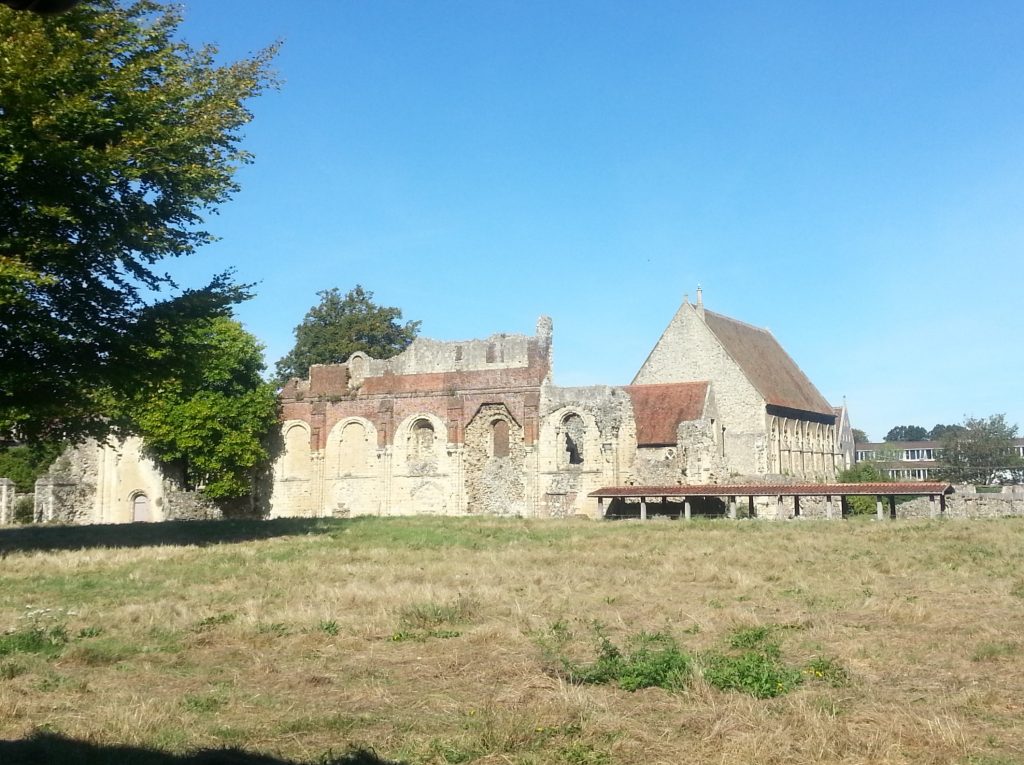
Like Canterbury Cathedral, this is a relic of St Augustine’s mission to convert the English pagans to Rome’s brand of Christianity. Upon his arrival, he met with King Æthelbert of Kent, whose French Christian wife Bertha convinced him to give the newcomers a chance. The Abbey was established in 598 as a residence for St Augustine and his monks, and also as a burial site for important personages.
Things went on this way for over 940 years, until the monks were kicked out and the land confiscated during the Dissolution of the Monasteries (thanks again, Henry VIII!). Many of the stones were plundered and sold, some of them becoming part of the fortifications of the Pale of Calais.
The site did stints as a royal residence and even a brewery before being preserved from 1844 onwards.
I continued, finding another Pilgrim’s Way which indicated I was on the right track. Following it down a narrow lane, I spotted my first red-breasted robin. I’d been told this was a symbol of England and a sign of good luck, so I took this as a sign of a successful walk to come.
Out in the countryside once more, I followed a wide lane through the freshly ploughed fields. I had done some reading on avoiding sore feet and taken on board a recommendation to remove footwear and rest my feet every few miles, so as I passed a small patch of woods I decided it was a good time to take my first bare foot break. So I sat beneath a buzzing power pylon and ate my second pork pie in the shade of the trees.
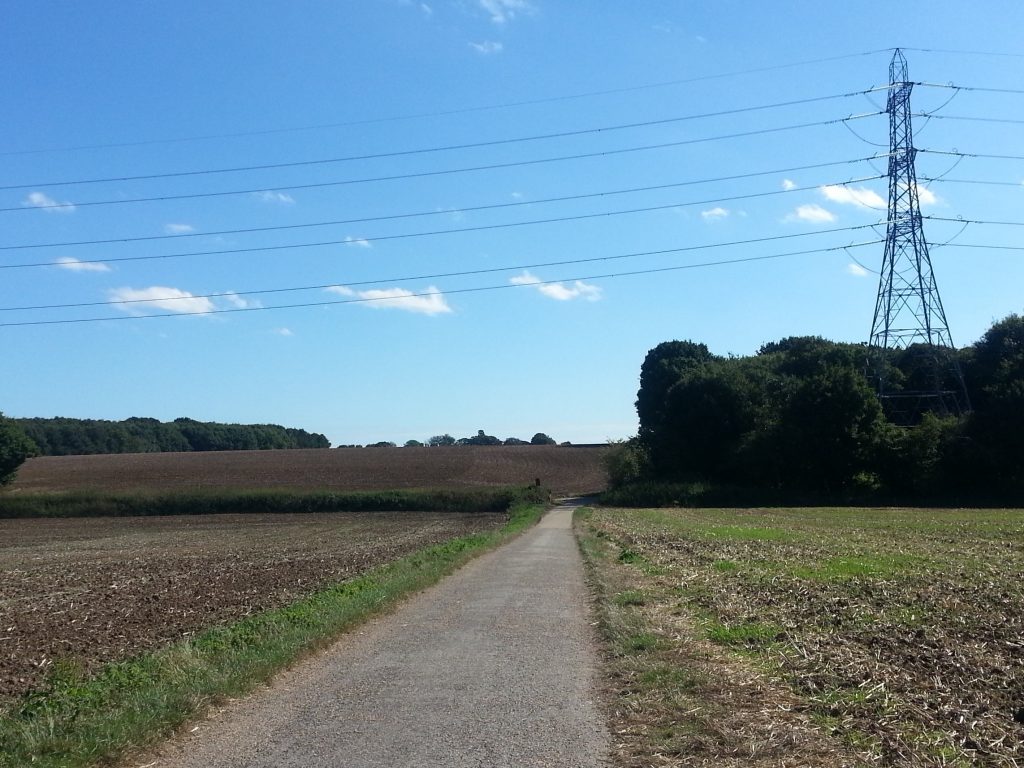
After a good airing of my feet I tramped onwards, passing a small orchard on the way. The path lead me shortly to the quaint village of Patrixbourne, the quiet main street lined by old-fashioned thatch-roofed cottages and double-storied brick buildings. One of these, longer than the rest and sporting a second story door, turned out to be the old oast – a building designed for hop-drying and dating from 1859.
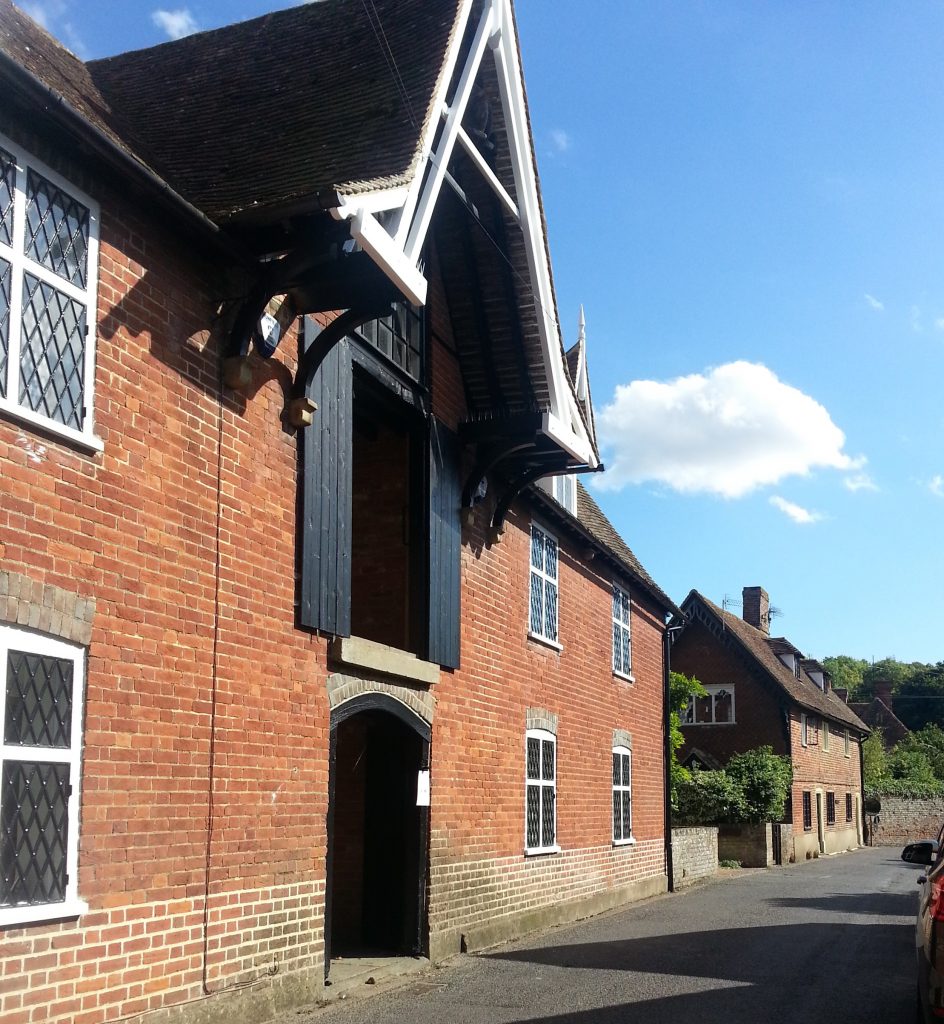
Not too far past the oast I came across St Mary’s Church, built about 1170 to replace an older Saxon church.
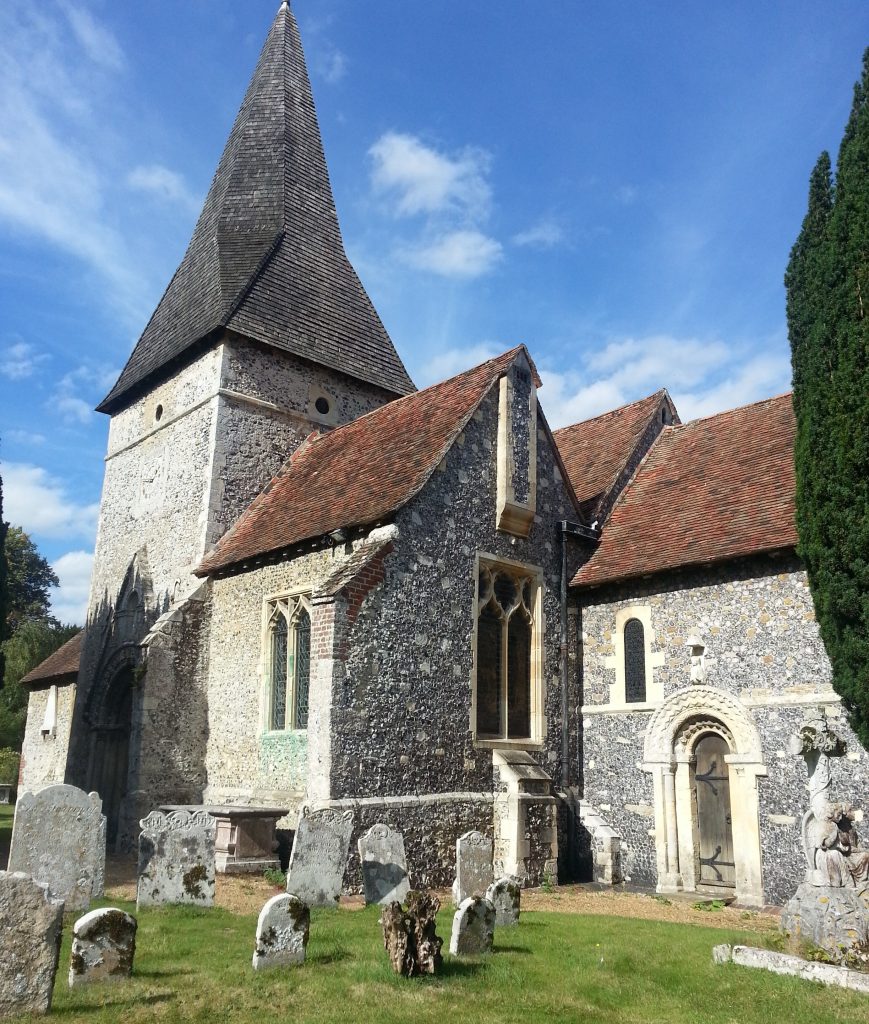
One of the famous features of this church is the wheel window which is part of the original building. In New Zealand terms, this window was installed before any human being had settled the country.
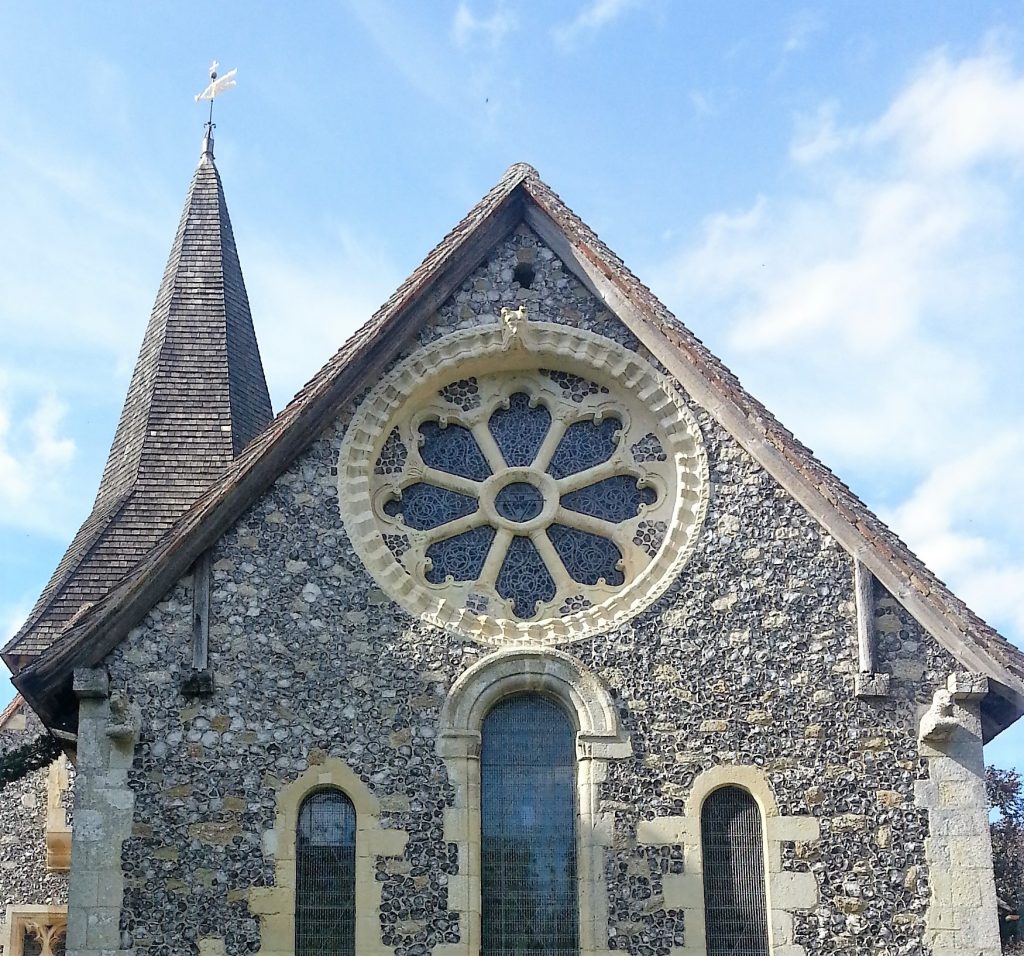
Moving on, I passed the small Nailbourne, once a wide navigable river but now an intermittent stream. My attention was caught by a flash of blue as a kingfisher fled from my approach.
As I left the town I was directed back out into the fields and decided it was time for another shoes-off rest, putting my feet up and relaxing in the sun. Fully rested, I followed the path along the curve between woodland and farmland towards the A2. Naturally I discovered a wooden seat only several hundred metres past my resting point, providing a lovely view over the dappled fields below.
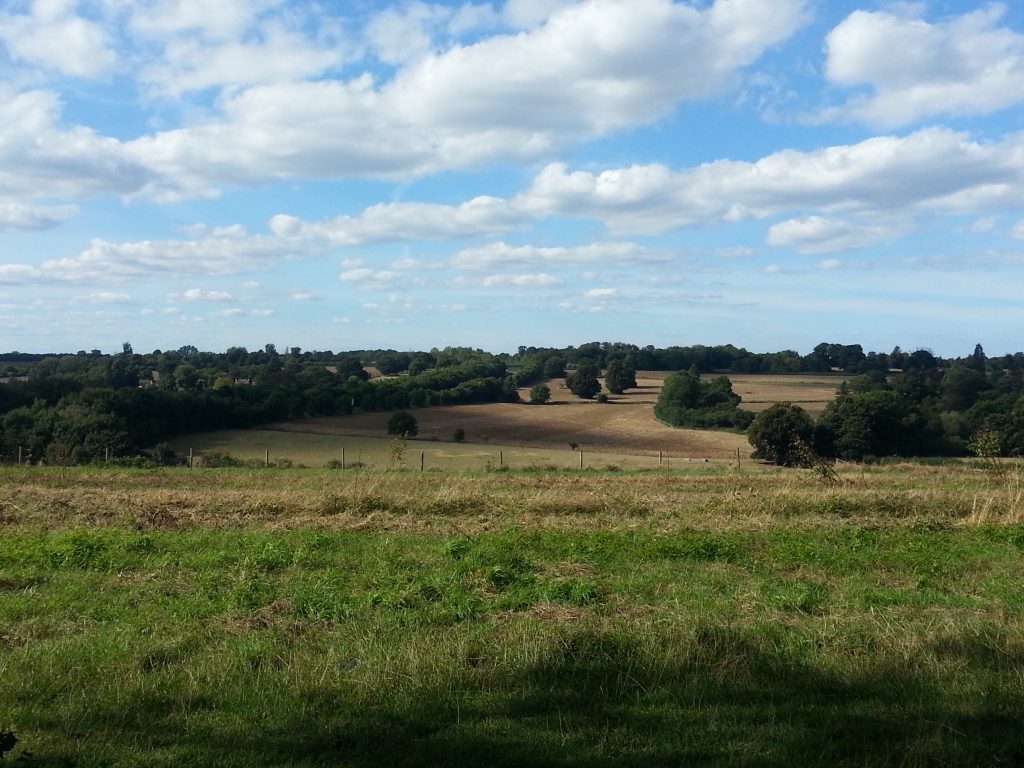
I figured why waste a rest spot? So I took a second rest, swigging on some cider as I sat.
Then I continued alongside the A2 for a little while before being directed on to path through the middle of the fields running parallel to the motorway – a path which seemed to stretch out infinitely ahead of me.

Along the edges of the trail where the ground was less disturbed by the plough I spotted several poppies in bloom.
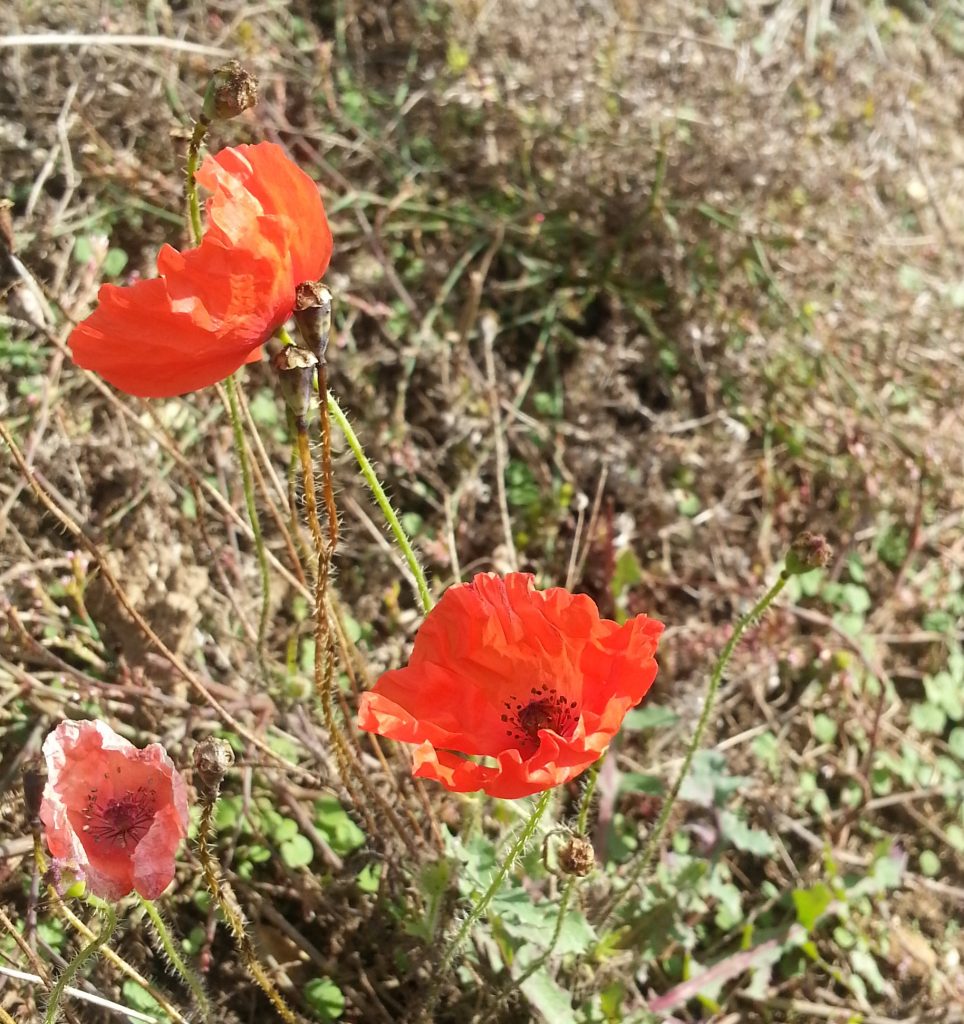
I finally reached the far side of the field and slipped through a hole in the hedge to find…another infinite field. So I struck off once again across the ploughed earth until I reached the far side. Here I pulled up short in confusion, because I couldn’t figure out which way to go. There were three options, and the trail marker seemed to be directing me towards the middle way, which was directly into an overgrown field full of thistles.
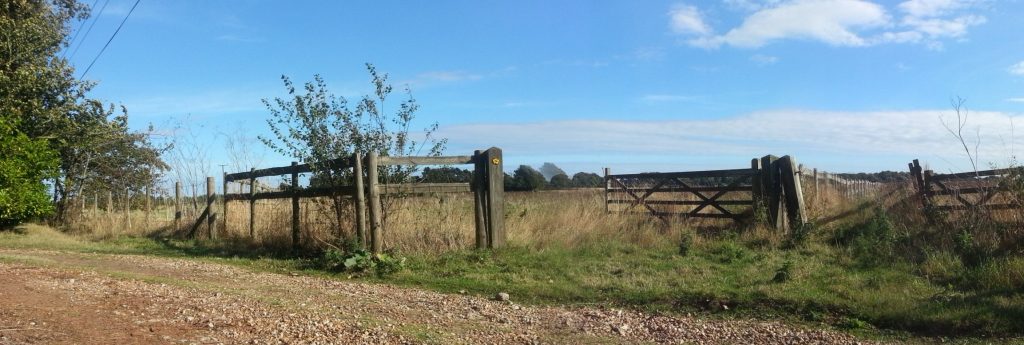
When in doubt, I decided, eat a pie. So I munched and examined my map and by the time I was wiping away my crumbs I’d decided to detour around the prickly paddock. This I did so, only to find myself walking along a dirt road that featured many conspicuous “PRIVATE” signs. But eventually I made it through and rejoined the correct route.
Passing a hedge I noticed a number of large birds making a racket, which turned out to be a group of pheasants. As I approached they fled into the undergrowth.
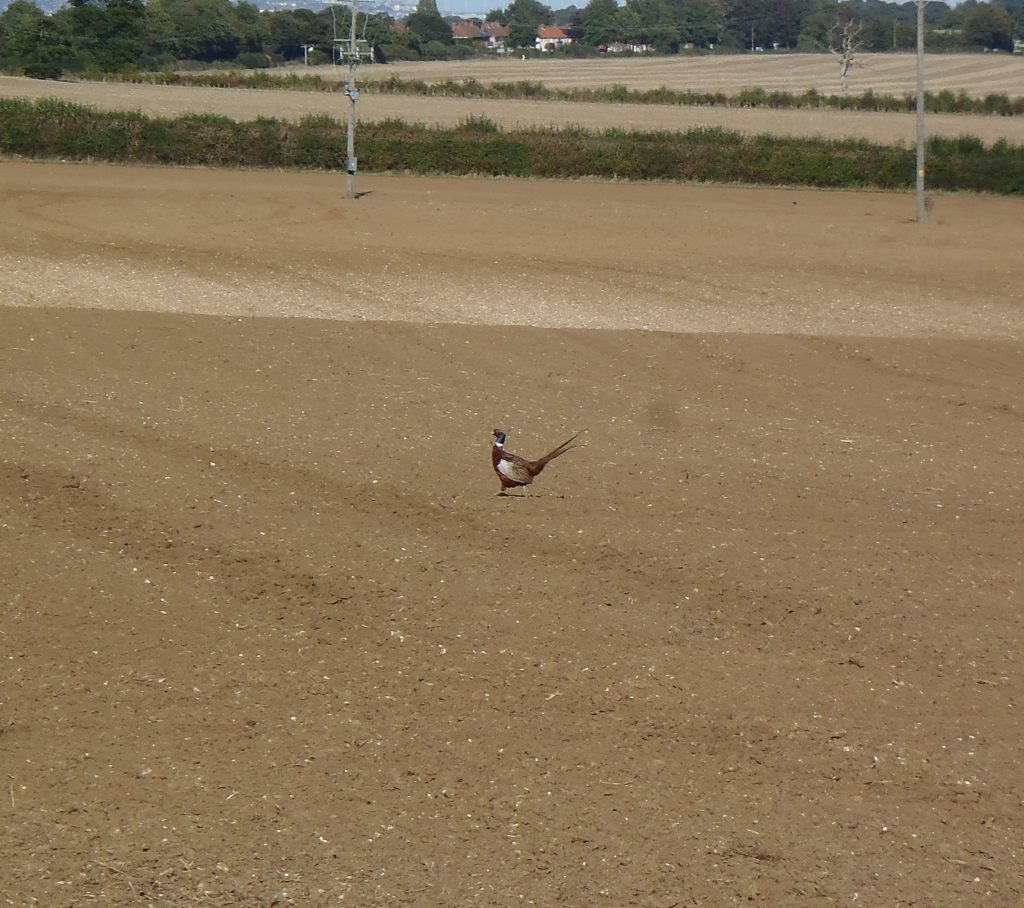
Soon after I came to Woolage Village, which turned out to be a lot less intriguing than Patrixbourne, made up of entirely modern houses. I sat on a bench by the play area and swigged my cider while chowing down on my final pie. My feet were beginning to throb a little, but I was getting very close to my destination so I was sure I could make it.
Then I struck out once more with new vigour, marching down the road and then on to another hedge-lined trail. Now my feet were getting worse and I knew I should rest them again, but with the end in sight I ploughed ahead without regard to my poor aching trotters.
Eventually I limped into Shepherdswell as all the pain I’d put off with regular resting piled on to me at once. I staggered into the station and slumped on to the nearest bench.
Thankfully the train was not long in arriving, and I was soon on my way home, English portion of the Via Francigena finally conquered. I’d walked 18km, my longest walk to date. Now I’d have to find a new challenge, but that could wait until after a bath and a good sleep.
References:
Patrixbourne, St Mary’s Church by David Ross


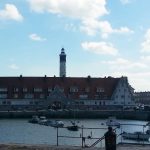
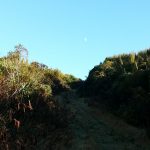
thank you for sharing this, great content – Calum